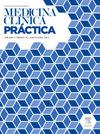Lesiones por animal ponzoñoso, raya de agua dulce: serie de casos
Q4 Medicine
引用次数: 0
Abstract
Introduction
The toxin produced by the freshwater stingray has a histolytic, anaphylactic and highly painful effect.
Objective
To present a series of clinical cases of accident with a poisonous animal, the stingray, and its clinical and epidemiological characterization.
Results
32 study series, 87,50% male and 12,50% female, age range 7-74 years, mean was 40,59 years, 59,38% were from rural areas and 40,62% urban, 34,37% consulted in the first 24 hours after the event, from one day to seven days 6,25%, from seven to 15 days 15,62%, and more than 15 days 43,75%, lesion in foot 53,13%, in neck of foot 21,87%, in leg 25%, symptoms presented: pain 100%, 71,87% signs of local infection, 59,37% purulent discharge, 56,25% lesion with necrosis. Complications: 9,37% compartment syndrome, 43,75% abscess, 12,50% osteomyelitis, 59,37% coverage defect. The range of surgical procedures performed per patient was 1-7. Isolation 83,33% gram negative, 93,75% in-hospital management and 6,25% were referred due to the severity of the lesions, mortality in this study was 3,12%.
Conclusion
Fluvial stingray causes serious lesions in lower limbs that cause prolonged hospital stays, multiple surgical procedures, large coverage defects that merit the investment of high-tech materials and reconstructive plastic surgery.
有毒动物伤害,淡水黄貂鱼:病例系列
导言淡水魟鱼产生的毒素具有组织溶解、过敏和剧烈疼痛作用。结果32个系列研究病例中,87.50%为男性,12.50%为女性,年龄在7-74岁之间,平均年龄为40.59岁,59.38%来自农村地区,40.62%来自城市,34.37%在事件发生后24小时内就诊,6.25%在1-7天内就诊,15.62%在7-15天内就诊,43.75%在15天以上就诊,病变部位在足部的占53.13%,在足颈部的占21.87%,在腿部的占25%,症状表现为:疼痛100%,体征71.87%:疼痛 100%,局部感染迹象 71.87%,脓性分泌物 59.37%,病变坏死 56.25%。并发症:9.37%为室间综合征,43.75%为脓肿,12.50%为骨髓炎,59.37%为覆盖缺损。每位患者的手术次数为 1-7 次。本研究中的死亡率为 3.12%。结论水流黄貂鱼会造成下肢严重病变,导致住院时间延长、多次手术、大面积覆盖缺损,值得投资高科技材料和整形外科手术。
本文章由计算机程序翻译,如有差异,请以英文原文为准。
求助全文
约1分钟内获得全文
求助全文

 求助内容:
求助内容: 应助结果提醒方式:
应助结果提醒方式:


